“Tree of Life: Lehi’s Dream—A Shared Vision,” Liahona, Sept. 1996, 35
Tree of Life:
Lehi’s Dream—A Shared Vision
Information for this article courtesy of Mark Staker, Museum of Church History and Art
Behold, I have dreamed a dream; or, in other words, I have seen a vision.”
With these words, the Book of Mormon prophet Lehi reveals a divine vision that testifies of God’s love for his children and his desire that they return to his presence. In the vision, God’s love is symbolized by a “tree, whose fruit was desirable to make one happy.” Lehi’s wife, Sariah, and two of their sons, Sam and Nephi, respond to his invitation to join him at the tree. But, to his sorrow, his rebellious sons, Laman and Lemuel, “would not come unto me and partake of the fruit.”
Lehi sees that although “numberless concourses of people” walk the path of life toward the tree, many become lost. Those who hold fast to a symbolic rod of iron eventually reach the tree and enjoy the fruit. But even after tasting fruit that Lehi said “filled my soul with exceedingly great joy,” some still fall away “into forbidden paths.” Many succumb to the jeers of mocking crowds calling from “a great and spacious building” (1 Ne. 8:2–35).
Lehi’s son Nephi saw the same vision and was given the interpretation of its symbolism (see 1 Ne. 11–14; 1 Ne. 15:21–36). Taking images from Lehi’s vision, as interpreted by Nephi, Latter-day Saint artists from around the world have used various media over the years to express their testimonies. The following pages contain some of these representations, reminding us to “give heed to the word of God and remember to keep his commandments always in all things” (1 Ne. 15:25).
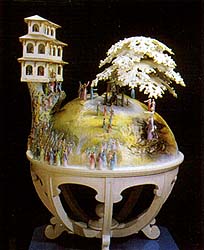
Lehi’s Dream, 1995, by Kurt Sjökvist, Mockfjärd, Sweden; carved wood, painted (157 x 101 x 101 centimeters). Lehi’s reference to “a large and spacious field, as if it had been a world” is interpreted as a globe upon which the allegory is presented. (Photo by R. T. Clark, Museum of Church History and Art.)
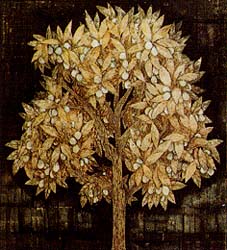
Tree of Life, 1990, by Kazuto Uota, Osaka, Japan; paint and plaster on board (139 x 138 cm).
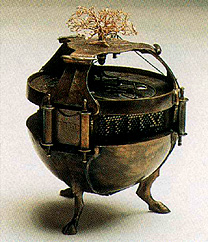
Liahona, 1990, by Lowell Fitt, San Ramon, California, United States; metal and glass (16 x 11 x 11 cm). The tree of life is shown on top of the artist’s concept of the Liahona, which guided Lehi in the wilderness.

Joseph Smith and the Tree of Life, 1987, by Juan M. Escobedo, Caliente, Nevada, United States; oil on board (127 x 76 cm). The Prophet Joseph Smith leads the way in this Mexican folk art interpretation of the tree of life.
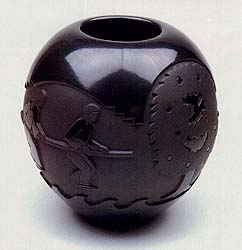
Iron Rod and Tree of Life, 1994, by Navajo Indian artist Harrison Begay Jr., Espanola, New Mexico, United States; fired clay (23 x 18 x 18 cm).
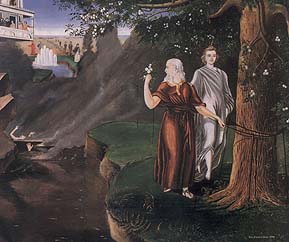
Lehi’s Dream, about 1875, by David Hyrum Smith, oil on canvas (61 x 45 cm). The artist was born a few months after his father, the Prophet Joseph Smith, was martyred in 1844. In the painting, Lehi is accompanied by the “Spirit of the Lord” (see 1 Ne. 8:5–6; 1 Ne. 11:11). (Courtesy of Reorganized Church of Jesus Christ of Latter Day Saints Archives, Independence, Missouri; photograph by R. T. Clark.)

Lehi’s Dream, 1984, by Dar Churcher, Victoria, British Columbia, Canada; beeswax on rice paper (71 x 61 cm). The artist suggests that some who set out for the fruitful tree of life may be lured toward barren trees shown at the right of the print.
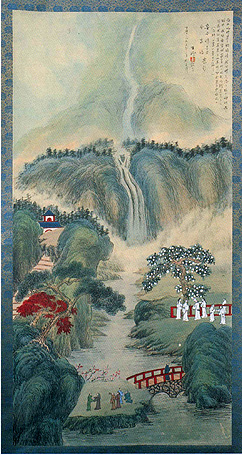
The Tree of Life, 1995, by Wang, Xiu, Chang-hua, Taiwan; tempera on silk (170 x 68 cm). This “mountain water” style of painting focuses on the joy of sharing the gospel with one’s family. The inscription quotes 1 Nephi 8:12 [1 Ne. 8:12].
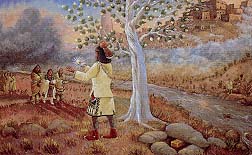
Lehi’s Vision of the Tree of Life, 1992, by Robert Yellowhair, Snowflake, Arizona, United States; oil on canvas (121 x 76 cm). The artist uses traditional symbols to express his belief that Native Americans are descendants of Lehi.
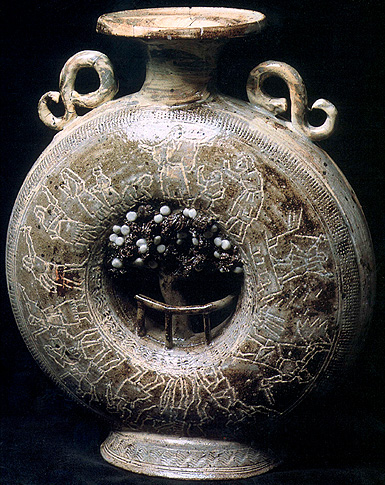
Become Familiar with the Scriptures, 1993, by Taichi Aoba, Sai jo-Shi, Ehime-ken, Japan; fired clay (35 x 26 x 10 cm). Lehi’s vision of the tree of life is encircled by other key stories from the Book of Mormon.
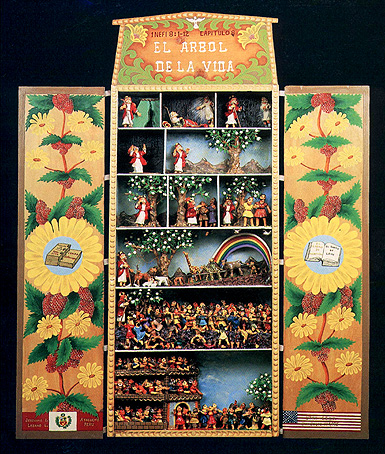
The Tree of Life, 1995, by Jeronimo Lozano Lozano, Salt Lake City, Utah, United States; painted plaster paste on wood (122 x 96 x 18 cm). Using the compartments of a traditional Peruvian retablo, the artist depicts Lehi’s dream in sequence. (Photograph by R. T. Clark.)
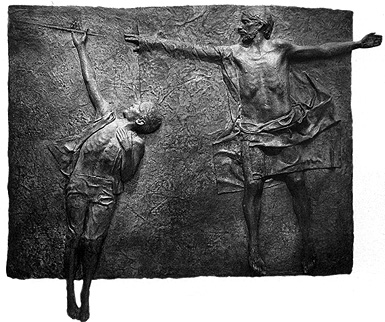
The Rod and the Veil, 1975, by Franz Johansen, Provo, Utah, United States; cast bronze (252 x 213 x 16 cm). The crucified Savior’s hand reaching through the veil between mortality and immortality becomes an extension of the iron rod. The boy strives upward to grasp the rod.
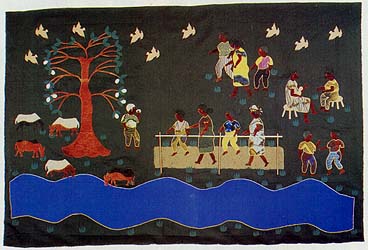
Tree of Life, 1994, by Abu Hassan Conteh, Freetown, Sierra Leone; applique, fabric on fabric (152 x 99 cm). Cattle, a traditional African instrument of exchange used to seal sacred contracts, here represent the covenant white-haired Lehi is making with the Lord. His family, upper right, make their way to the tree, but Laman and Lemuel and two seated figures are interested only in worldly things.
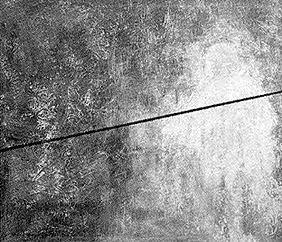
The Iron Rod, 1989, by Johan Helge Benthin, Hoschstadt, Germany; oil on canvas (78 x 71 cm). The artist concentrates on one single element of Lehi’s dream, the iron rod, that leads to the glowing figure representing the Savior. (Photograph by R. T. Clark.)
Photography in this article by Ronald Read, Museum of Church History and Art, except as noted.